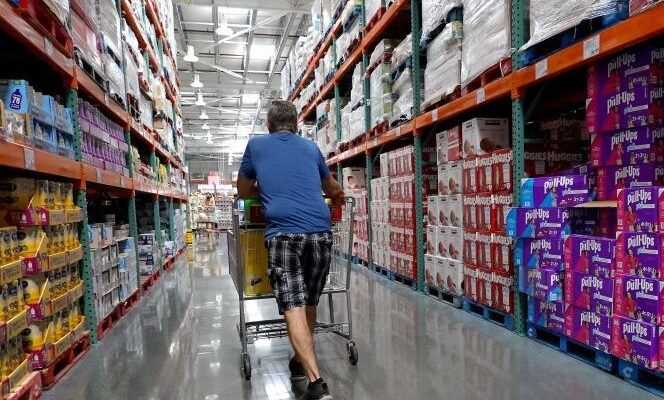Optimism has subsided slightly. In its forecasts published Tuesday, October 12, the International Monetary Fund (IMF) expects global growth of 5.9% in 2021 (the institution estimated the increase to 6% in July), then 4.9% in 2022. In a few months, the horizon has ” clouded “ in low-income countries, due to the spread of the Delta variant of Covid-19. And supply chain disruptions make the recovery ” more difficult “ in advanced economies. Growth forecasts are only revised upwards in commodity-exporting countries, which are benefiting from the rise in prices.
The pace of the global recovery worries the IMF less than the widening gaps between countries. In 2024, the gross domestic product (GDP) of advanced economies will be 0.9% above the pre-pandemic level, while it will be 5.5% lower in the group of emerging countries (excluding China). The crisis put an end, at least for a few years, to the catching up of emerging countries and pushes low-income countries into stagnation. The latter have recorded, since July, the largest downward adjustment in growth (- 0.6%), and between 65 million and 75 million of their inhabitants are expected to fall into extreme poverty this year.
This great divergence is explained first of all by double-speed vaccination campaigns: 60% of the inhabitants of rich countries are vaccinated, against only 5% in poor countries, which delays their deconfinement and their resumption. The slowness of vaccination also threatens the global economy, and the IMF calls for it to be accelerated: “It would save lives (…), would decrease the risk of new variants appearing and add trillions of dollars to the economic recovery. “
An ability to mobilize funds that differs depending on the country
According to the institution’s calculations, 1 billion doses could be given by rich countries without compromising their vaccination goals, and it would only take an additional 50 billion dollars (43.3 billion euros) to vaccinate 40% of the population of each country by the end of 2021 and 70% by mid-2022. Poor countries are going to need to spend $ 200 billion to fight the pandemic and $ 250 billion to revive their economies.
The other factor of divergence and inequalities is precisely the ability to mobilize funds to support and revive economies. “Many emerging and developing countries, faced with more restrictive financial conditions and inflation risks, stop supporting their economies earlier, despite activity that has not returned to normal”, underlines Gita Gopinath, the chief economist of the IMF. This year, the Washington-based institution increased its reserves by $ 650 billion through the largest Special Drawing Rights (SDR) issue in its history. A breath of fresh air that benefits all Fund member countries, in proportion to their quotas.
You have 47.84% of this article to read. The rest is for subscribers only.
